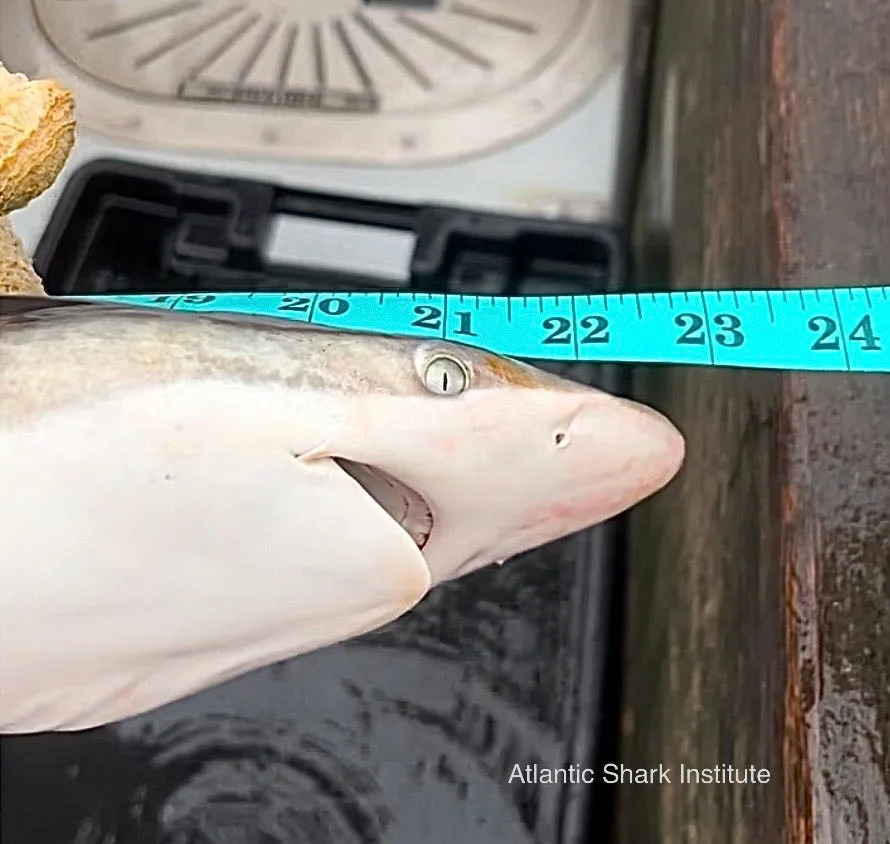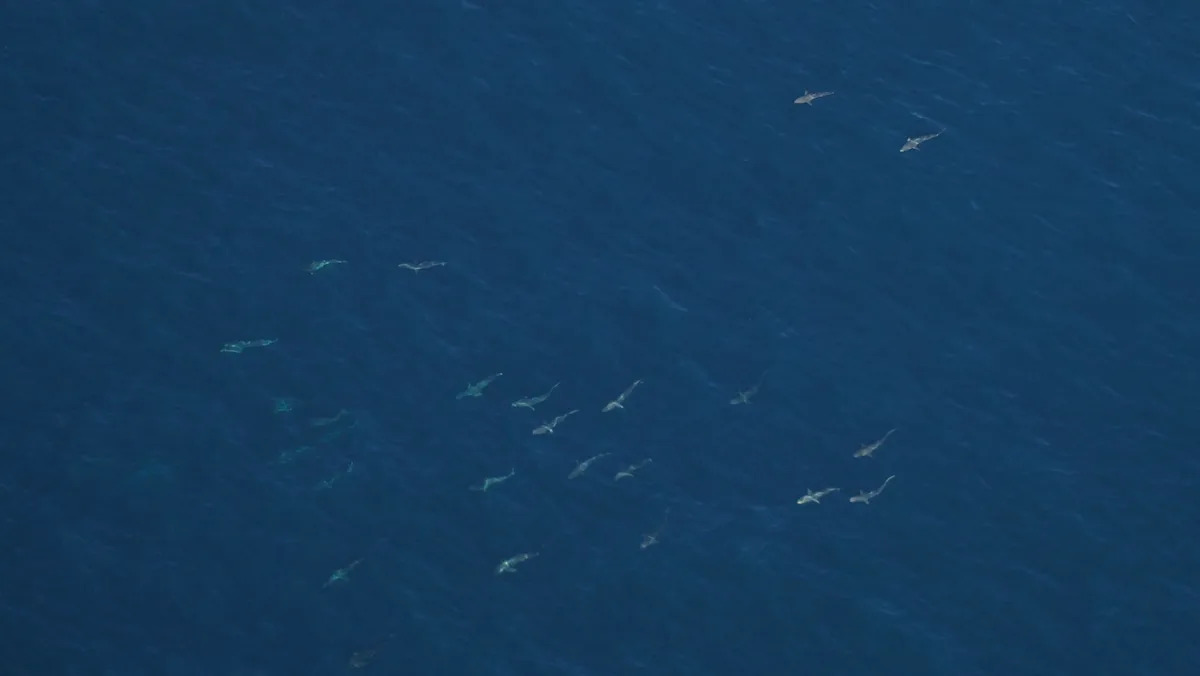A kitschy movie might call the gathering of an estimated 400 sharks off Block Island a “Sharknado,” but the Rhode Island Department of Environmental Management isn’t quite so melodramatic.
“Talk about a party,” the DEM said in a post displaying aerial photographs of the school of sharks about 10 miles south of the island. “In August, about 400 spinner sharks were spotted swimming near Block Island during an aerial survey.”
The sharks were spotted when researchers from the DEM’s Division of Marine Fisheries and the Anderson Cabot Center for Ocean Life at the New England Aquarium were in the air to track North Atlantic right whales.
Spinner sharks are common in warmer waters, like those off the Carolinas and Florida, but researchers are seeing more of them off Rhode Island as ocean temperatures warm.
Still, 400 of them in one group?
“I was very surprised because I have never seen an aggregation that large,” Sonja Feinberg, an aerial observer with the Aquarium’s Anderson Cabot Center, said. “It was exciting to realize as we kept circling how big the aggregation was. At first it just looked like a group of about 30, but the more we circled in the area, the more we realized there could have been hundreds.”

A photo taken by researchers doing an aerial survey of whales shows a large school of about 400 spinner sharks about 10 miles south of Block Island in August 2025.
Orla O’Brien, research scientist with the Anderson Cabot Center and leader of the aerial survey team, said, “This is our first time seeing a tight knit aggregation of spinner sharks of this size, although we do occasionally see smaller groups of sharks in association with each other. The other large aggregation of sharks we have seen was a group of 1,000-plus basking sharks – this took place in November of 2013.”
The researchers were able to use the images to identify the shark species “based on morphological features like fins, body shape, etc.,” the DEM explained to The Journal via email. “They also are known to travel in groups, which helps with identification.”
The DEM acknowledged the possibility that they could have been sandbar sharks, “which also travel in groups and are becoming more common in the area,” but researchers are “leaning more toward spinners.”
Local researchers are studying spinner sharks
Until recently, spinner sharks were a rare find in the waters of Southern New England. On Sept. 1, 2024, local fisherman Capt. Carl Granquist caught a spinner shark “just south” of Charlestown that triggered a lot of questions for scientists. Granquist measured the shark and took video of it before returning it to the water. Granquist sent the video to the Atlantic Shark Institute in Wakefield.
The 24-inch spinner shark had a partially healed umbilical cord, indicating that it was less than a year old. Did the youngster make a long trek north into Rhode Island waters? Or have warming waters shifted the nursery habitat for spinner sharks northward?
Joshua Moyer, resident research scientist at the Atlantic Shark Institute and a lecturer at Yale University, said in January that, according to the literature, the most documented nursery habitat for spinners ranged from the Carolinas to Florida. “But here we have a small shark with a partially healed umbilical wound, supporting its designation as a young-of-the-year shark, in Rhode Island.”

The young spinner shark caught by a local fishing boat captain in September 2024 was measured, videotaped and returned to the water.
The young shark’s presence in Rhode Island led to the publication of a paper in the Journal of Fish Biology. It was written by Moyer; Jon Dodd, the executive director of the Atlantic Shark Institute; and Stephen Kajiura, a professor at Florida Atlantic University and member of the Atlantic Shark Institute’s research advisory board.
“The most fascinating thing about the paper is the size of the spinner shark,” Dodd said. “With a range that focuses on the southern U.S., a mom giving birth here in Rhode Island is unique and opens up a range of questions.”
On Friday, Nov. 7, Dodd said his agency is still studying spinner sharks, and it’s undetermined whether spinner sharks have been born in Northern waters.
He did say he’d seen some “big schools” of spinner sharks closer to Montauk, New York, this summer.
Spinner sharks live up to their name
The Florida Museum of Natural History describes spinner sharks as “a slender, gray-bronze shark named for its distinctive aerial ‘spinning’ behavior at the surface.”
“When feeding, spinner sharks will often swim through schools of bait fish, spinning along their longitudinal axis, snapping at fish as they move through the water toward the surface,” the museum says. “When they breach the surface, they can be seen spinning in the air – sometimes as much as 20 feet above the water surface.”
Spinner sharks grow to an average of about 6.4 feet and have been blamed for 16 unprovoked attacks on humans, although none have been fatal, according to the museum’s International Shark Attack File. Their “teeth are adapted for seizing small prey rather than tearing at large prey and therefore usually result in relatively minor injuries,” the museum said.
According to the DEM, the August aerial survey also spotted three minke whales, 14 fin whales, and one humpback whale.
It’s unclear whether the sharks and whales got close to each other, but the DEM said, “These sharks are not predators of whales and forage more on fish.”
This article originally appeared on The Providence Journal: Hundreds of sharks photographed in school off Block Island in August

